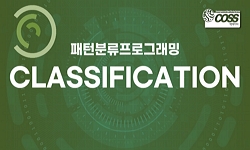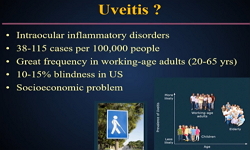The importance of high-resolution sea ice maps of the Arctic Ocean is increasing due to the possibility of pioneering North Pole Routes and the necessity of precise climate prediction models. In this study, sea ice classification algorithms for two de...
http://chineseinput.net/에서 pinyin(병음)방식으로 중국어를 변환할 수 있습니다.
변환된 중국어를 복사하여 사용하시면 됩니다.
- 中文 을 입력하시려면 zhongwen을 입력하시고 space를누르시면됩니다.
- 北京 을 입력하시려면 beijing을 입력하시고 space를 누르시면 됩니다.


Sentinel-1 A/B 위성 SAR 자료와 딥러닝 모델을 이용한 여름철 북극해 해빙 분류 연구 = A Study on Classifying Sea Ice of the Summer Arctic Ocean Using Sentinel-1 A/B SAR Data and Deep Learning Models
한글로보기https://www.riss.kr/link?id=A106488493
- 저자
- 발행기관
- 학술지명
- 권호사항
-
발행연도
2019
-
작성언어
Korean
- 주제어
-
등재정보
KCI등재,SCOPUS,ESCI
-
자료형태
학술저널
- 발행기관 URL
-
수록면
999-1009(11쪽)
-
KCI 피인용횟수
0
- DOI식별코드
- 제공처
- 소장기관
-
0
상세조회 -
0
다운로드
부가정보
다국어 초록 (Multilingual Abstract)
The importance of high-resolution sea ice maps of the Arctic Ocean is increasing due to the possibility of pioneering North Pole Routes and the necessity of precise climate prediction models. In this study, sea ice classification algorithms for two deep learning models were examined using Sentinel- 1 A/B SAR data to generate high-resolution sea ice classification maps. Based on current ice charts, three classes (Open Water, First Year Ice, Multi Year Ice) of training data sets were generated by Arctic sea ice and remote sensing experts. Ten sea ice classification algorithms were generated by combing two deep learning models (i.e. Simple CNN and Resnet50) and five cases of input bands including incident angles and thermal noise corrected HV bands. For the ten algorithms, analyses were performed by comparing classification results with ground truth points. A confusion matrix and Cohen’s kappa coefficient were produced for the case that showed best result. Furthermore, the classification result with the Maximum Likelihood Classifier that has been traditionally employed to classify sea ice. In conclusion, the Convolutional Neural Network case, which has two convolution layers and two max pooling layers, with HV and incident angle input bands shows classification accuracy of 96.66%, and Cohen’s kappa coefficient of 0.9499. All deep learning cases shows better classification accuracy than the classification result of the Maximum Likelihood Classifier.
국문 초록 (Abstract)
북극항로의 개척 가능성과 정확한 기후 예측 모델의 필요성에 의해 북극해 고해상도 해빙 지도의 중요성이 증가하고 있다. 그러나 기존의 북극 해빙 지도는 제작에 사용된 위성 영상 취득 ...
북극항로의 개척 가능성과 정확한 기후 예측 모델의 필요성에 의해 북극해 고해상도 해빙 지도의 중요성이 증가하고 있다. 그러나 기존의 북극 해빙 지도는 제작에 사용된 위성 영상 취득 센서의 특성에 따른 데이터의 취득과 공간해상도 등에서 그 활용도가 제한된다. 본 연구에서는 Sentinel-1 A/B SAR 위성자료로부터 고해상도 해빙 지도를 생성하기 위한 딥러닝 기반의 해빙 분류 알고리즘을 연구하였다. 북극해 Ice Chart를 기반으로 전문가 판독에 의해 Open Water, First Year Ice, Multi Year Ice의 세 클래스로 구성된 훈련자료를 구축하였으며, Convolutional Neural Network 기반의 두 가지 딥러닝 모델(Simple CNN, Resnet50)과 입사각 및 thermal noise가 보정된 HV 밴드를 포함하는 다섯 가지 입력 밴드 조합을 이용하여 총 10가지 케이스의 해빙 분류를 실시하였다. 이 케이스들에 대하여 Ground Truth Point를 사용하여 정확도를 비교하고, 가장 높은 정확도가 나온케이스에 대해 confusion matrix 및 Cohen의 kappa 분석을 실시하였다. 또한 전통적으로 분류를 위해 많이 활용되어 온 Maximum Likelihood Classifier 기법을 이용한 분류결과에 대해서도 같은 비교를 하였다. 그 결과Convolution 층 2개, Max Pooling 층 2개를 가진 구조의 Convolutional Neural Network에 [HV, 입사각] 밴드를 넣은 딥러닝 알고리즘의 분류 결과가 96.66%의 가장 높은 분류 정확도를 보였으며, Cohen의 kappa 계수는 0.9499 로 나타나 딥러닝에 의한 해빙 분류는 비교적 높은 분류 결과를 보였다. 또한 모든 딥러닝 케이스는 Maximum Likelihood Classifier 기법에 비해 높은 분류 정확도를 보였다.
참고문헌 (Reference)
1 김윤지, "북극해 해빙 탐지를 위한 Sentinel-1 HV자료의 방사보정 연구" 대한원격탐사학회 34 (34): 1273-1282, 2018
2 Nusser, S. M., "Survey methods for assessing land cover map accuracy" 10 (10): 309-331, 2003
3 Wang, L., "Sea ice concentration estimation during melt from dual-pol SAR scenes using deep convolutional neural networks : A case study" 54 (54): 4524-4533, 2016
4 Liu, H., "SVM-based sea ice classification using textural features and concentration from RADARSAT-2 dual-pol ScanSAR data" 8 (8): 1601-1613, 2014
5 Chi, J., "Prediction of arctic sea ice concentration using a fully data driven deep neural network" 9 (9): 1305-, 2017
6 Notz, D., "Observed Arctic sea-ice loss directly follows anthropogenic CO2 emission" 354 (354): 747-750, 2016
7 Ali, I., "Methods to remove the border noise from Sentinel-1 synthetic aperture radar data: implications and importance for time-series analysis" 11 (11): 777-786, 2018
8 Stehman, S. V., "Introduction to special issue on map accuracy" 10 : 301-308, 2003
9 Mladenova, I. E., "Incidence angle normalization of radar backscatter data" 51 (51): 1791-1804, 2012
10 Cooke, C. L., "Estimating Sea Ice Concentration From SAR : Training Convolutional Neural Networks With Passive Microwave Data" 57 (57): 4735-4747, 2019
1 김윤지, "북극해 해빙 탐지를 위한 Sentinel-1 HV자료의 방사보정 연구" 대한원격탐사학회 34 (34): 1273-1282, 2018
2 Nusser, S. M., "Survey methods for assessing land cover map accuracy" 10 (10): 309-331, 2003
3 Wang, L., "Sea ice concentration estimation during melt from dual-pol SAR scenes using deep convolutional neural networks : A case study" 54 (54): 4524-4533, 2016
4 Liu, H., "SVM-based sea ice classification using textural features and concentration from RADARSAT-2 dual-pol ScanSAR data" 8 (8): 1601-1613, 2014
5 Chi, J., "Prediction of arctic sea ice concentration using a fully data driven deep neural network" 9 (9): 1305-, 2017
6 Notz, D., "Observed Arctic sea-ice loss directly follows anthropogenic CO2 emission" 354 (354): 747-750, 2016
7 Ali, I., "Methods to remove the border noise from Sentinel-1 synthetic aperture radar data: implications and importance for time-series analysis" 11 (11): 777-786, 2018
8 Stehman, S. V., "Introduction to special issue on map accuracy" 10 : 301-308, 2003
9 Mladenova, I. E., "Incidence angle normalization of radar backscatter data" 51 (51): 1791-1804, 2012
10 Cooke, C. L., "Estimating Sea Ice Concentration From SAR : Training Convolutional Neural Networks With Passive Microwave Data" 57 (57): 4735-4747, 2019
11 Park, J. W., "Efficient thermal noise removal for Sentinel-1 TOPSAR cross-polarization channel" 56 (56): 1555-1565, 2017
12 He, K., "Deep residual learning for image recognition" 770-778, 2016
13 Ma, L., "Deep learning in remote sensing applications : A meta-analysis and review" 152 : 166-177, 2019
14 Li, Y., "Deep learning for remote sensing image classification: A survey" 8 (8): 1264-, 2018
15 Chollet, F, "Deep Learning with Python vol. 1" Manning Publications Company 2017
16 Hong, D. B., "Automatic discrimination approach of sea ice in the Arctic Ocean using Sentinel-1 Extra Wide Swath dualpolarized SAR data" 39 (39): 4469-4483, 2018
17 Parkinson, C. L., "Arctic sea ice extents, areas, and trends, 1978-1996" 104 (104): 20837-20856, 1999
18 Wulder, M. A., "An accuracy assessment framework for large-area land cover classification products derived from medium-resolution satellite data" 27 (27): 663-683, 2006
19 Inoue, J., "Additional Arctic observations improve weather and sea-ice forecasts for the Northern Sea Route" 5 : 2015
동일학술지(권/호) 다른 논문
-
산림 식생 모니터링을 위한 무인기 다중분광영상의 반사율 산출 및 평가
- 대한원격탐사학회
- 이화선
- 2019
- KCI등재,SCOPUS,ESCI
-
- 대한원격탐사학회
- 이권호
- 2019
- KCI등재,SCOPUS,ESCI
-
LTE 원격관제를 통한 UAV의 비가시권 데이터 취득방안
- 대한원격탐사학회
- 정호현
- 2019
- KCI등재,SCOPUS,ESCI
-
무인항공기에서 생성된 포인트 클라우드의 평면성 분석을 통한 자동 건물 모델 생성 기법
- 대한원격탐사학회
- 김한결
- 2019
- KCI등재,SCOPUS,ESCI
분석정보
인용정보 인용지수 설명보기
학술지 이력
| 연월일 | 이력구분 | 이력상세 | 등재구분 |
|---|---|---|---|
| 2027 | 평가예정 | 재인증평가 신청대상 (재인증) | |
| 2021-01-01 | 평가 | 등재학술지 유지 (재인증) |  |
| 2018-01-01 | 평가 | 등재학술지 유지 (등재유지) |  |
| 2015-01-01 | 평가 | 등재학술지 유지 (등재유지) |  |
| 2011-01-01 | 평가 | 등재학술지 유지 (등재유지) |  |
| 2009-01-01 | 평가 | 등재학술지 유지 (등재유지) |  |
| 2007-01-01 | 평가 | 등재학술지 유지 (등재유지) |  |
| 2006-07-24 | 학술지등록 | 한글명 : 대한원격탐사학회지외국어명 : Korean Journal of Remote Sensing |  |
| 2005-01-01 | 평가 | 등재학술지 유지 (등재유지) |  |
| 2002-07-01 | 평가 | 등재학술지 선정 (등재후보2차) |  |
| 2000-01-01 | 평가 | 등재후보학술지 선정 (신규평가) |  |
학술지 인용정보
| 기준연도 | WOS-KCI 통합IF(2년) | KCIF(2년) | KCIF(3년) |
|---|---|---|---|
| 2016 | 0.52 | 0.52 | 0.54 |
| KCIF(4년) | KCIF(5년) | 중심성지수(3년) | 즉시성지수 |
| 0.53 | 0.44 | 0.725 | 0.12 |




 ScienceON
ScienceON KISS
KISS







